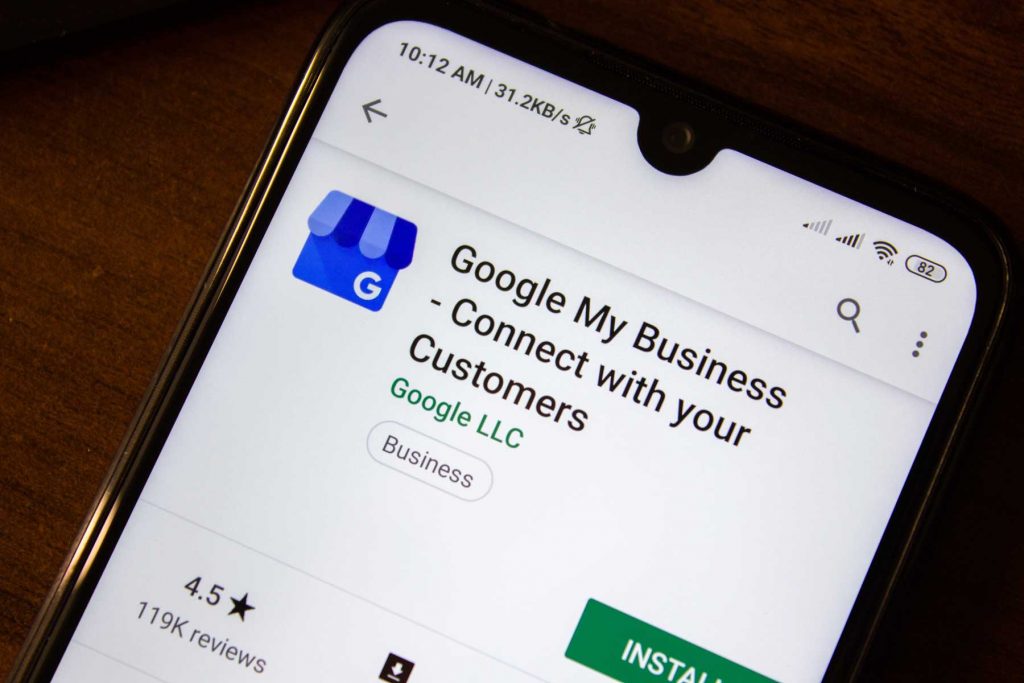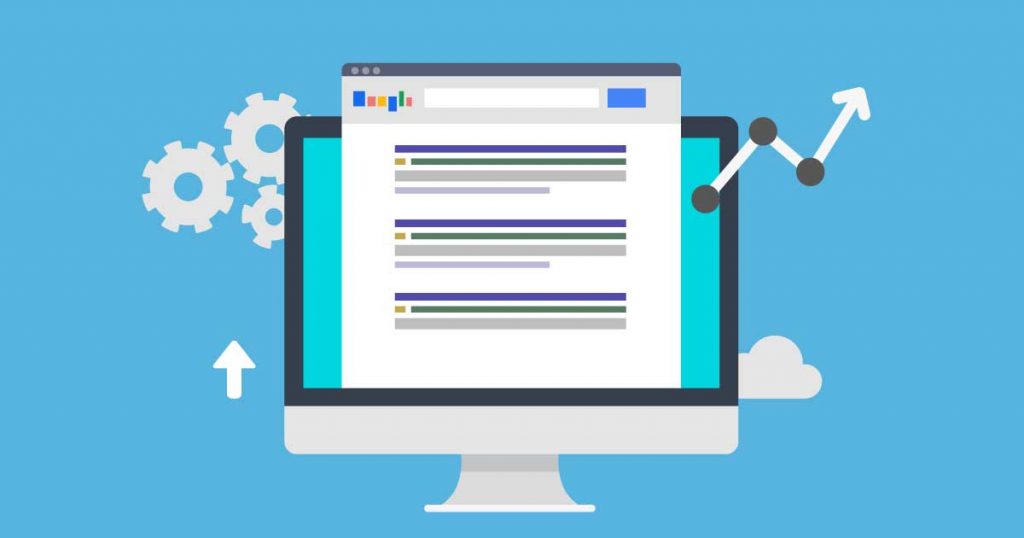When you operate a local business, you constantly compete with other local companies for customers. While retaining customers and earning the business of new clients involves numerous efforts, a huge factor in whether or not your business will remain successful is determined by how well you use the power of local SEO.
In this guide for Heating and Cooling, Electrical, or Plumbing businesses, we’ll take a look at what local SEO is, why it can make or break your business, and what you can do to improve your local reach.
What is Local SEO?
Before we dive into why local SEO has such a huge impact on your business’ success, let’s take a look at local SEO.
Local SEO — or local search engine optimization — involves your business’s efforts to rank for heating and cooling, electrical, or plumbing-related keywords in local search.
Local search involves two main channels of traffic:
- Google Maps listings — Google Maps listings target nearby customers. These listings show up at the top of a Google search when Google believes that the search has a localized relevance. For example, if someone is searching for “heating and cooling, electrical, or plumbing company near me,” Google will display their map listings at the top of the page.
- Google search listings — Underneath the Google map listings are standard search results. These are commonly referred to as organic listings. In the case of a localized search, such as “heating and cooling, electrical, or plumbing company near me,” Google will display both nearby businesses based on map listings, as well as standard search listings.
What’s interesting to note when comparing these two potential channels for localized traffic is that Google Maps relies heavily on a searcher’s actual proximity to your business. This limits the reach of your listing, as you must be physically located near a searcher.
Conversely, Google search listings are used by both local and national businesses. Google will still factor in your location when displaying these results, but they allow you the chance to reach a wider audience than your map listing can.
The tasks involved in ranking in both of these areas are referred to as optimization efforts or SEO. Local SEO, therefore, is simply a focused approach to optimization, to earn traffic from local sources.
Why is Local SEO Important?
If you don’t invest in local SEO, you will not show up on either Google Maps or Google search results when your customers are looking for your services. This is why local SEO can make or break your local business.
When someone nearby looks for a contractor in the area, if you have not properly optimized your online presence, your competition will show up instead. And, if you don’t build out content that will help you rank for related keywords, not solely dependent on a searcher’s location, you’ll miss out on a large amount of critical traffic.
The goal of local SEO is to help your business rank for relevant keywords in your local area, targeting customers that live within your service radius.
How to Optimize Your Business for Local SEO in 7 Steps
To ensure that you don’t miss out on important, localized traffic, use the following seven steps to optimize your digital presence.
1. Claim Your Business Listing
If you haven’t already claimed your Google business listing, now is the time. Check out our handy Step-by-Step Guide for Claiming Your Business Online to get started.
If you have already claimed your listing, make sure your Name, Address, and Phone Number (NAP) are correct and consistent. For example, the way you have listed your address on your website needs to match your Google business listing identically, down to the spelling and capitalization of each word in your listing. Consistency helps ensure that Google recognizes your business as one company across channels.
Additionally, when choosing your primary category for your Google business listing, make sure you are specific. Rather than picking a broad category, choose the specific service you offer, such as “HVAC contractor.”
What happens if I have multiple business listings?
If you notice that you have more than one Google business listing associated with your company, don’t panic. This can happen when you have had multiple people manage your online presence, by accident, or due to a scam. To remedy the situation, simply go through Google’s process for removing duplicate listings:
Remove or report duplicate businesses from bulk uploads — Google Business Profile Help.

2. Link Your Listing to an Optimized Website
One of the keys to local SEO is linking your business listing to an optimized website.
Optimizing your website should include a wide variety of factors, such as the following:
- Ensuring fast webpage load times (less than 2 seconds)
- Writing title tags and meta descriptions for each page
- Cleaning up URL structures
- Optimizing on-page content
- Including industry-specific keywords
Optimizing your website is no small feat. It can be helpful to partner with a digital marketing agency to ensure that your website meets current standards.
You can also take a look at our Back to the Basics: Understanding SEO guide to diving deeper into how website optimization works.
3. Build Out Localized Content
Beyond just your standard optimization, you’ll want to ensure that you are creating and adding a steady stream of localized content to both your website and your primary digital channels. Examples of localized content include the following:
- Dedicated service pages: When a potential customer searches for your services, they are probably doing so with a highly specific set of keywords. For example, they might not search for “Heating and Cooling, Electrical or Plumbing company,” but rather, they might be looking specifically for “AC repair near me.” This is where dedicated service pages can help Google understand that you offer a relevant service, allowing you to show up for these precise searches.
- Localized pages: Similar to dedicated service pages, you will want to include localized pages that showcase where you provide your services. These pages will allow Google to understand how far your service reach goes.
- Blog posts: Blogs are a great way to target long-tail keywords. Customers often use Long-tail keywords in the form of a question. For example, you could create a blog that answers the question “How often should I service my furnace?”. This will allow you to capture customers as they are doing early-stage research.
- Videos: Videos are another great way to target long-tail keywords and are often one of the quickest ways to outrank your competition. Because videos are extremely popular with searchers, Google favors these when returning results.
4. Actively Post to Your Google Business Listing
Beyond just adding content to your website and YouTube, you’ll want to actively post to your Google business listing. Because this listing plays such a vital role in your ability to show up in localized searches, you want to invest ample time in your presence here.
Use your listing to showcase promotions, highlight recently completed jobs, and interact with customers. Make sure to promptly answer questions that come your way, and consider implementing Google’s built-in chat feature.
5. Clean Up Listings Across the Web and Build More Citations
To increase your reach, you will want to list your business in more places than just via Google. Not only that, but when you create listings across the web, you will help Google recognize your business to a greater degree.
Not only do you want to add business citations in numerous places, but you want to go through and clean up any existing listings. Make sure that every single business citation includes an exactly matching NAP.
Examples of other citations include:
- HomeAdvisor
- Thumbtack
- Angi
- Yelp
- Yellowpages
While you’re busy adding and cleaning up these listings, take a moment to review our 10 Ways to Make Your Social Media Presence Stand Out.

6. Increase the Number of Backlinks to Your Website
Another factor that Google takes into account when determining which companies show up in localized search results is the number of backlinks that point to your website as a local business.
A great example of this is requesting that your local chamber of commerce add your business to their website. This helps include yet another data point that indicates to Google that you are a local contractor.
When it comes to earning backlinks, get creative! Look for other local organizations you can partner with that are willing to add you to their website as a local business. For example, you could sponsor a food drive event and request a link back to your website on your local food pantry’s website. The more local links you can earn, the better your rankings.
7. Target Satisfied Customers to Build More Reviews
At the end of the day, Google’s goal is to satisfy its customers, which means they want to deliver the highest quality results that will bring customers of their search platform back anytime they need to perform another search.
For this reason, Google favors businesses with positive reviews. Google understands that its customers want to do business with reputable companies in the area.
To improve your localized listings, ask satisfied customers for a quick review. While your Google business listing is a great place to begin, the more positive reviews you have across channels, such as Facebook, Yelp, and other contractor listing sites, the better you’ll look in the eyes of Google and ultimately of potential customers.
You can reach out to customers via email to request a quick review, or you can even train your techs to request a review in person once a service is complete. Be sure that you also take the time to respond to reviews, thanking your customers for their feedback.
Further Reading: Learn more about the Importance of Google Reviews for Your Online Presence.
Need Help with Your Local SEO?
Local SEO is at the center of your business’ success. When your online presence is optimized, you can increase your reach dramatically. With all the moving parts involved in local SEO, it can be hard for many small business owners to find the time to tackle each task.
This is where our team can help. We’ll be more than happy to work with you to improve your local reach. We can start by analyzing where you are today, looking for key areas where we can quickly improve your local reach. Next, we’ll dive deep, providing you with a long-term strategy to increase your rankings over time.
Simply contact our team, and we’ll get to work!



